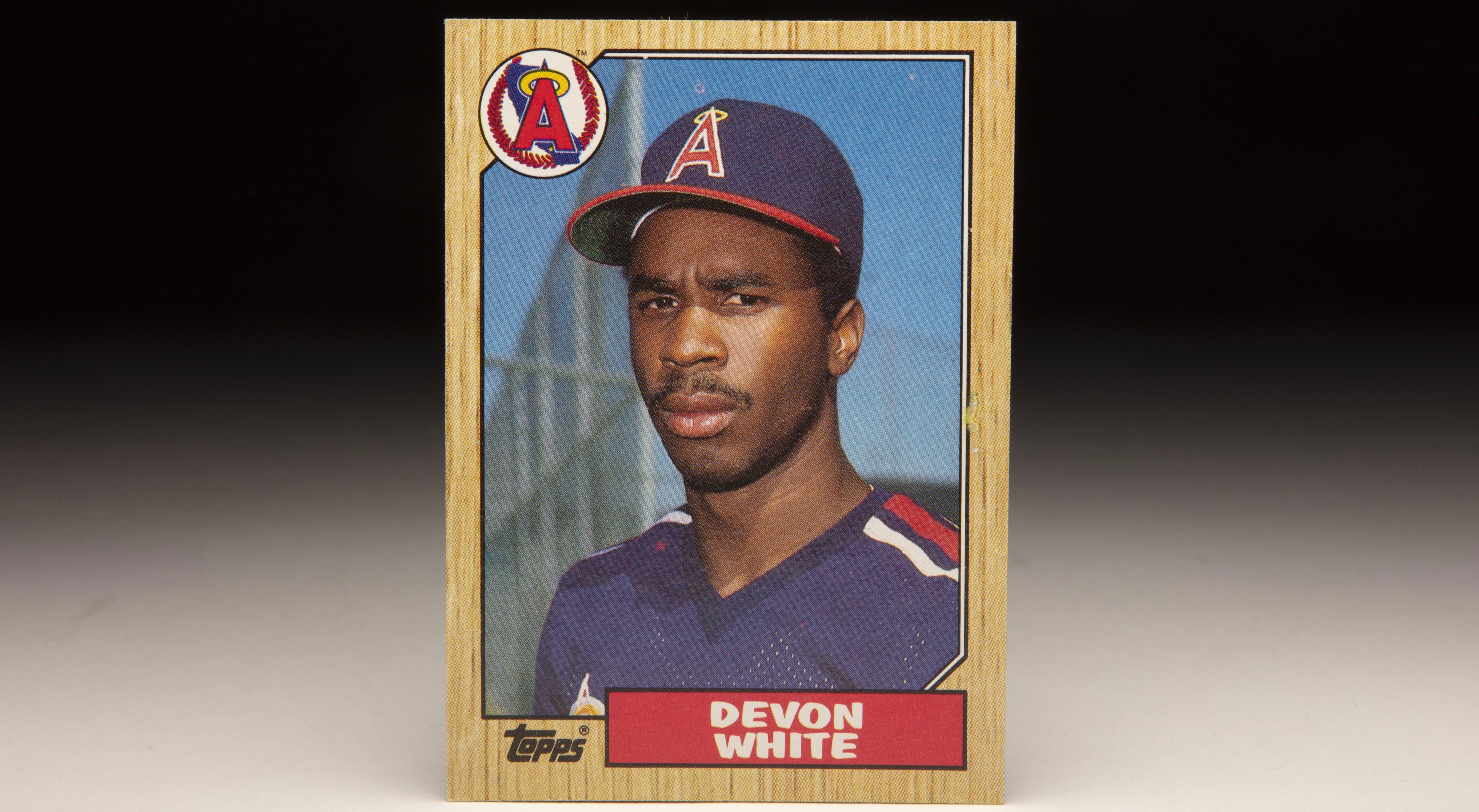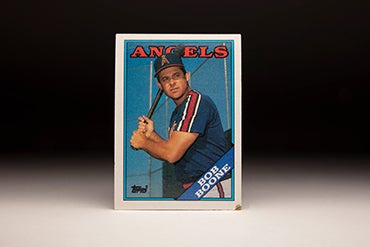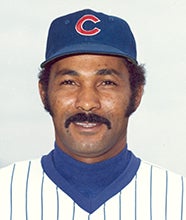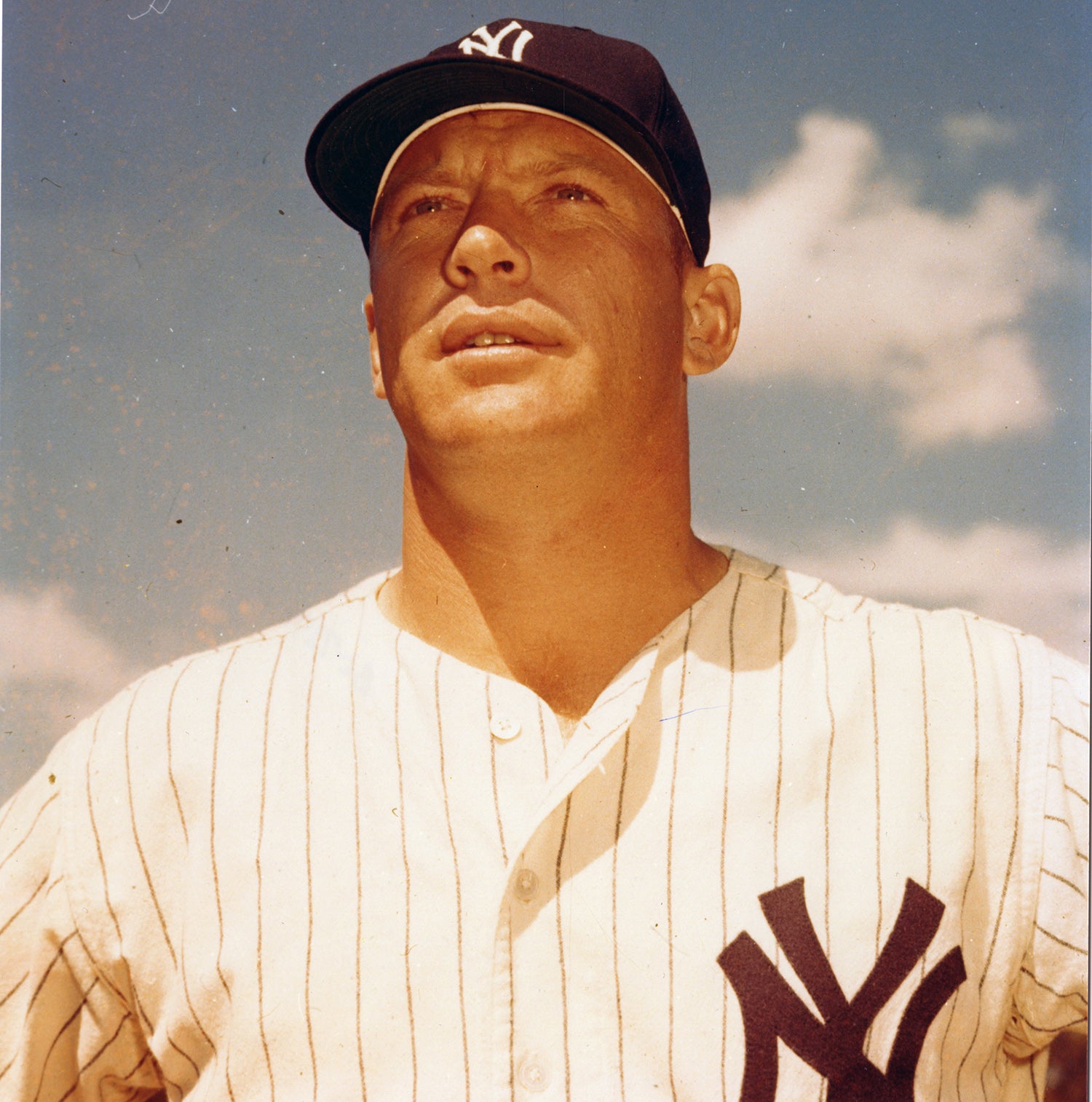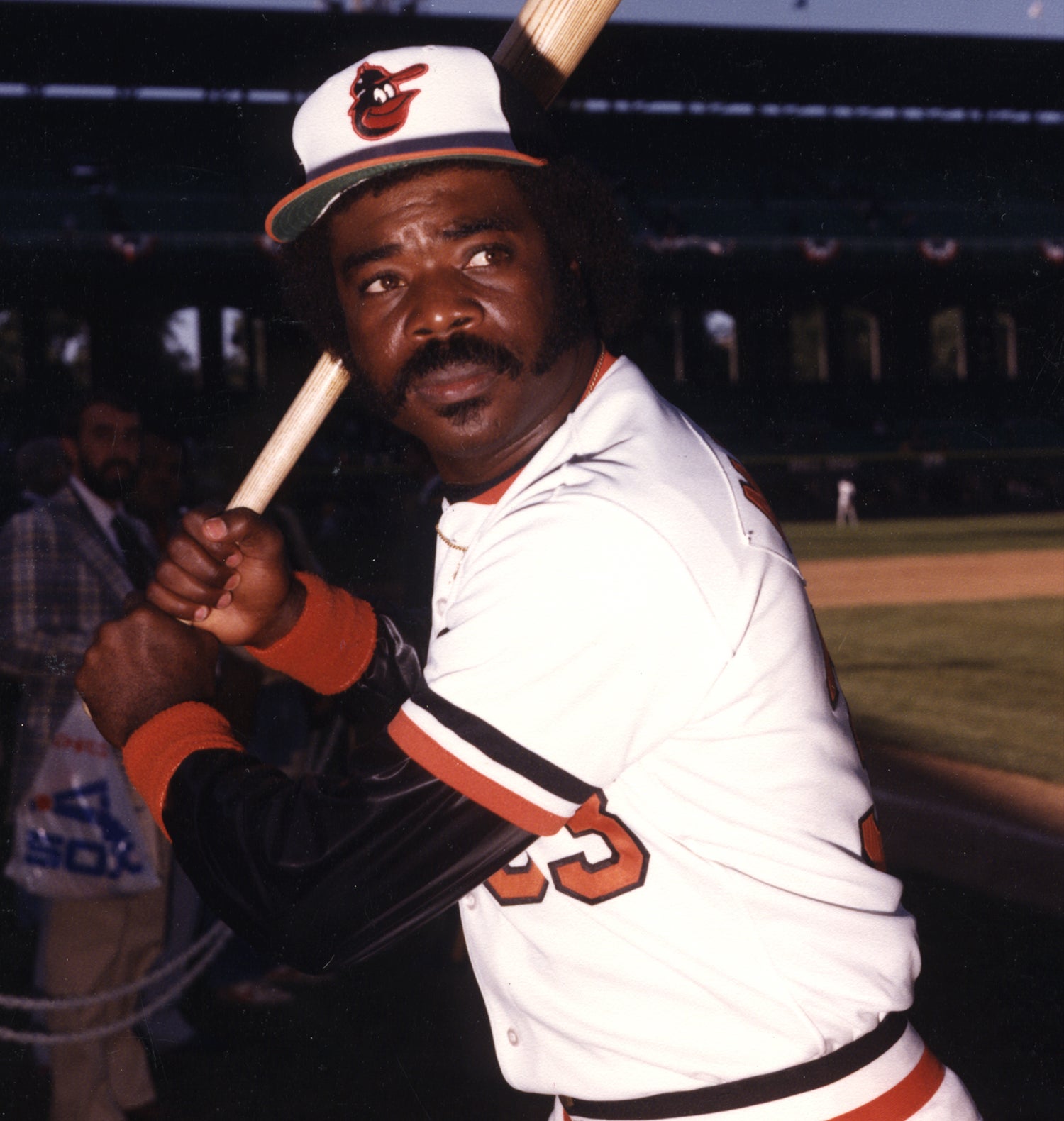- Home
- Our Stories
- #CardCorner: 1990 Topps Chili Davis
#CardCorner: 1990 Topps Chili Davis
He became the first Jamaican-born player in the American or National leagues when he debuted with the Giants in 1981, but Chili Davis was much more than a footnote in history.
As one of the most successful switch-hitters to ever play the game, Davis captured three World Series rings in the 1990s and seemed to get better at the plate with each passing year.
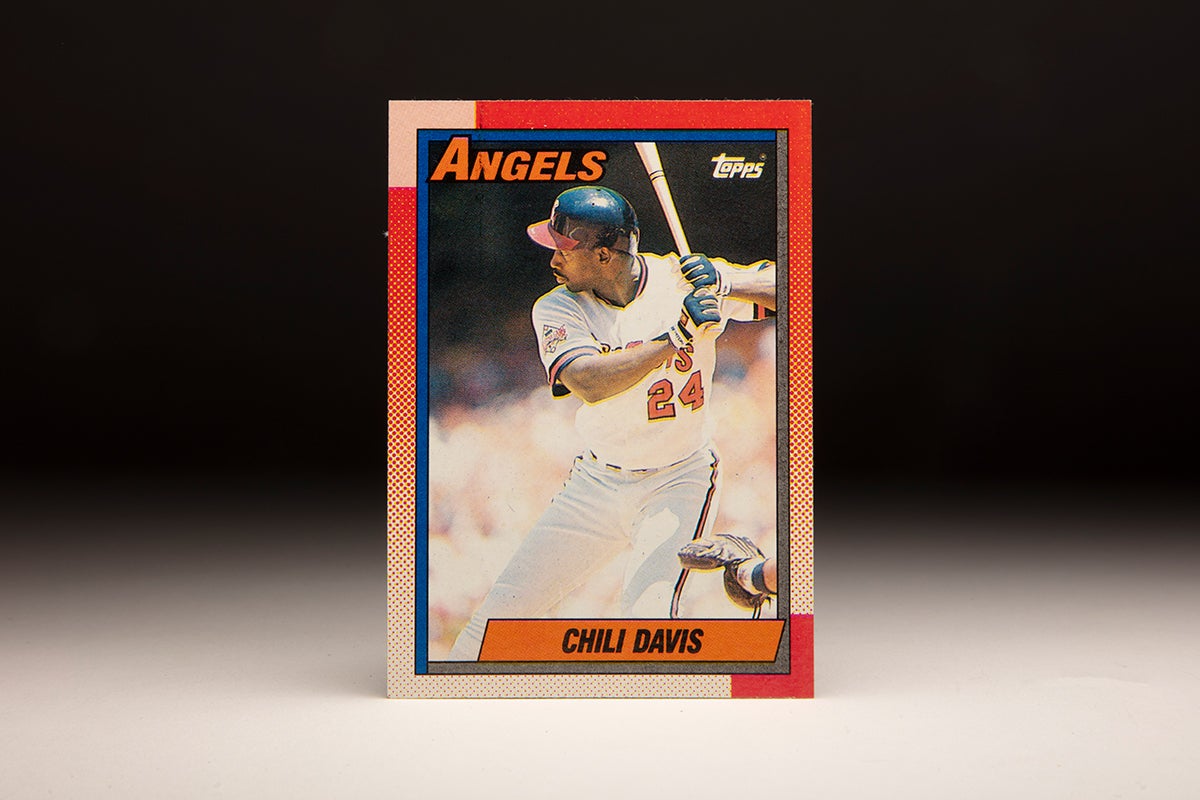
Born Charles Theodore Davis on Jan. 17, 1960, in Kingston, Jamaica, Davis and his family moved to Los Angeles in 1969. He got his nickname – which was originally “Chili Bowl” before later shortened to one word – when a classmate commented that his haircut looked like someone had simply cut around a bowl placed on his head.
Davis played cricket and soccer in Jamaica. But baseball was seldom played in the island nation that was a longtime British colony.
“I had never heard of the game of baseball until I came to the States,” Davis told the New York Daily News in 1982. “Once I got involved, I found myself liking it more and more. I guess I wanted to compete with the guys and pretty much be even with them in their style of play. It helped me improve.”
Davis graduated from Susan Miller Dorsey High School in Los Angeles in 1977, and the Giants selected Davis in the 11th round of the 1977 June MLB Draft as the 270th overall pick. Of the 269 players drafted ahead of him, only six finished with a better career Wins Above Replacement figure than Davis’ 38.3.
A right-handed hitting catcher in high school, Davis began experimenting with switch-hitting in the Instructional League in the fall of 1977 after seeing repeated on-the-hands sliders from right-handed pitchers.
“So one day I went out and told my hitting coach, Hank Sauer, that I was going to switch-hit,” Davis told the Kansas City Star in 1997. “If I can’t hit it out from the left side, I’m not going to (switch-hit) because I’m not going to be a singles hitter from one side and a power hitter from the other.
“I hit .343 that year in instructional ball. And the first time I hit (homers) right and left in the same game, I broke open the champagne.”
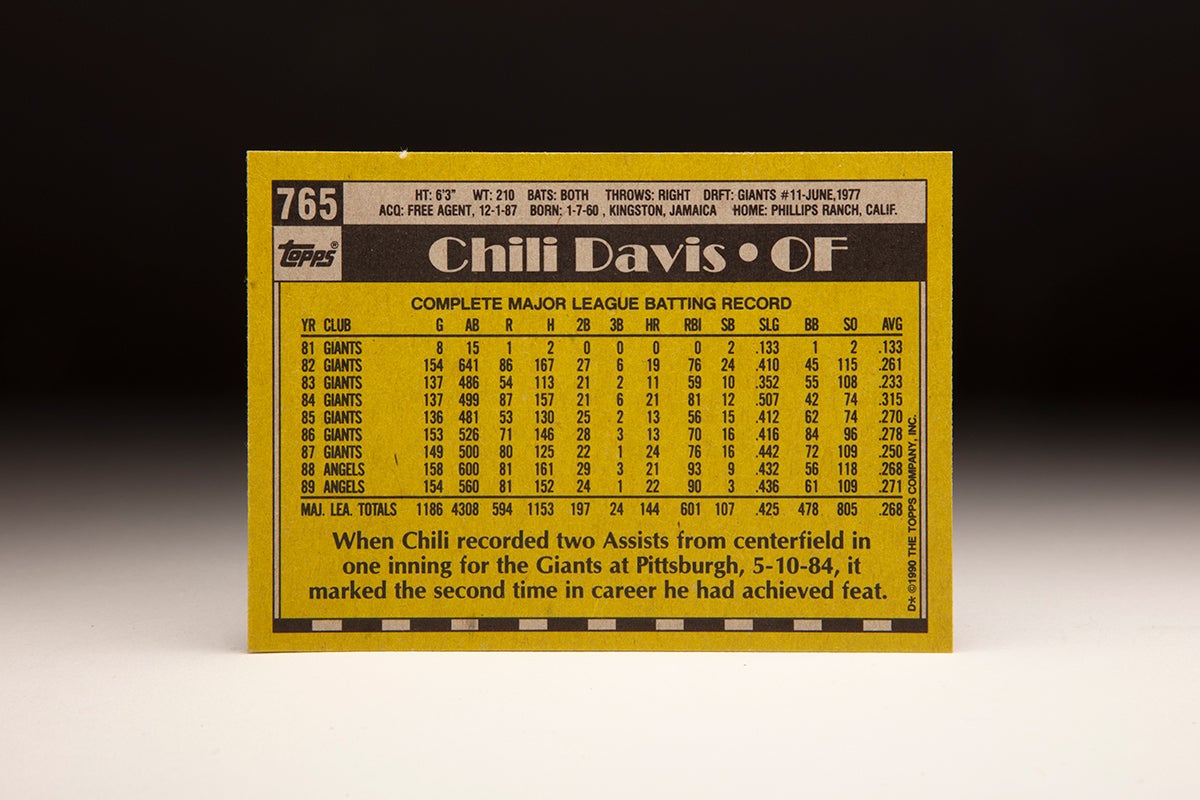
Davis began his pro career with Class A Cedar Rapids of the Midwest League in 1978, batting .281 with 16 home runs, 73 RBI and 15 stolen bases in 124 games. He moved up to Fresno of the California League the next year, batting .269 with 21 home runs, 95 RBI, 30 steals and 80 walks in 134 games.
Then after hitting .294 for Double-A Shreveport in 1980, the Giants put Davis on their 40-man roster and invited him to Spring Training in 1981. He became the talk of baseball that March, drawing comparisons to Hall of Famer Willie Mays with his speed and power while hitting .408.
“What do I like about him? Everything,” Giants manager Frank Robinson told the Los Angeles Times. “He’s done it all. He’s earned a spot on the ballclub.”
Davis made the Giants’ Opening Day roster but was on the bench for the April 9 opener against the Padres as Bill North played center field and hit out of the leadoff spot. Davis made his debut the following day as a pinch-hitter for Enos Cabell, striking out against lefty Gary Lucas.
“That’s the closest thing I’ve seen to me since I got out of baseball,” future Hall of Famer Billy Williams told Robinson about Davis during Spring Training.
But after eight games – including a start in center field and a start in right field – Davis was sent to Triple-A Phoenix in mid-May.
“I haven’t ever sat on the bench before,” Davis told the Arizona Republic after joining the Phoenix Giants. “I’m glad I got the chance to be up there. Before, I was pretty psyched out about the big leagues. I thought the players were so much better than in the minors. I found out that there’s not that much difference. The big thing is consistency…they seldom make mistakes.”
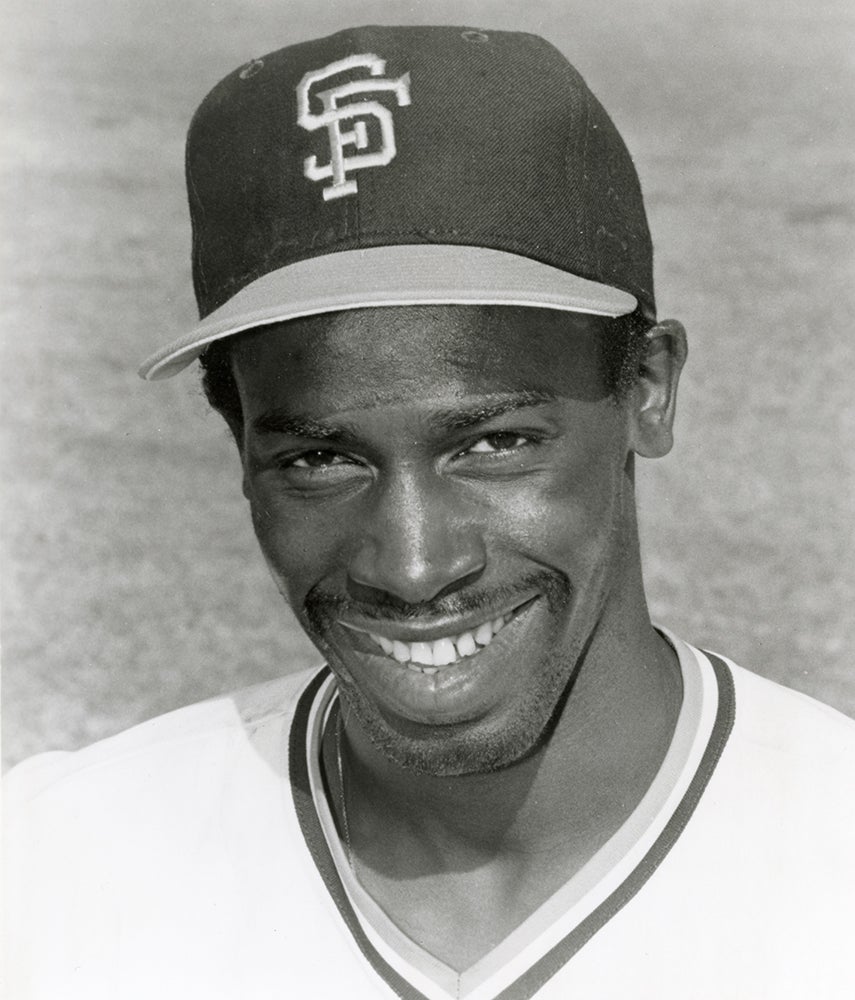
Davis spent the rest of the 1981 season in Triple-A, batting .350 with 19 homers, 75 RBI and 40 steals in 88 games. In 1982, Davis returned to Spring Training with the Giants and earned the starting left fielder’s job on Opening Day.
“You know how Fernando Valenzuela excited a crowd last season because he was so refreshing, honest and talented? Well, Chili will do the same thing this year,” Giants hitting coach Jim Lefebvre told the Sacramento Bee. “People come alive around him. Within two years, he could be the most exciting player in baseball.”
Davis flashed his all-around talent during the 1982 campaign, batting .261 with 86 runs scored, 19 homers, 76 RBI and 24 steals in 154 games – 144 of which came in center field. The Giants were involved in a three-way race for the NL West title entering the season’s final week but played the final four games of the year without Davis, who severely sprained his left ankle against the Astros on Sept. 29. The Giants wound up third in the division race, two games behind the Braves.
Davis finished fourth in the National League Rookie of the Year balloting. But the ankle injury required surgery and limited his speed for the rest of his career.
Davis was hitting .299 through April in 1983 – after signing a two-year deal worth more than $600,000 – before falling into a deep slump that left him at .222 in late June when the Giants sent him to Triple-A for almost two weeks. But he never got untracked that year and finished with a .233 batting average and 11 homers in 137 games.
“I’m not going to blame anyone for what happened last year because it was my fault,” Davis told the Peninsula Times Tribune in the spring of 1984. “I can’t pinpoint the reason. I just had a bad year.”
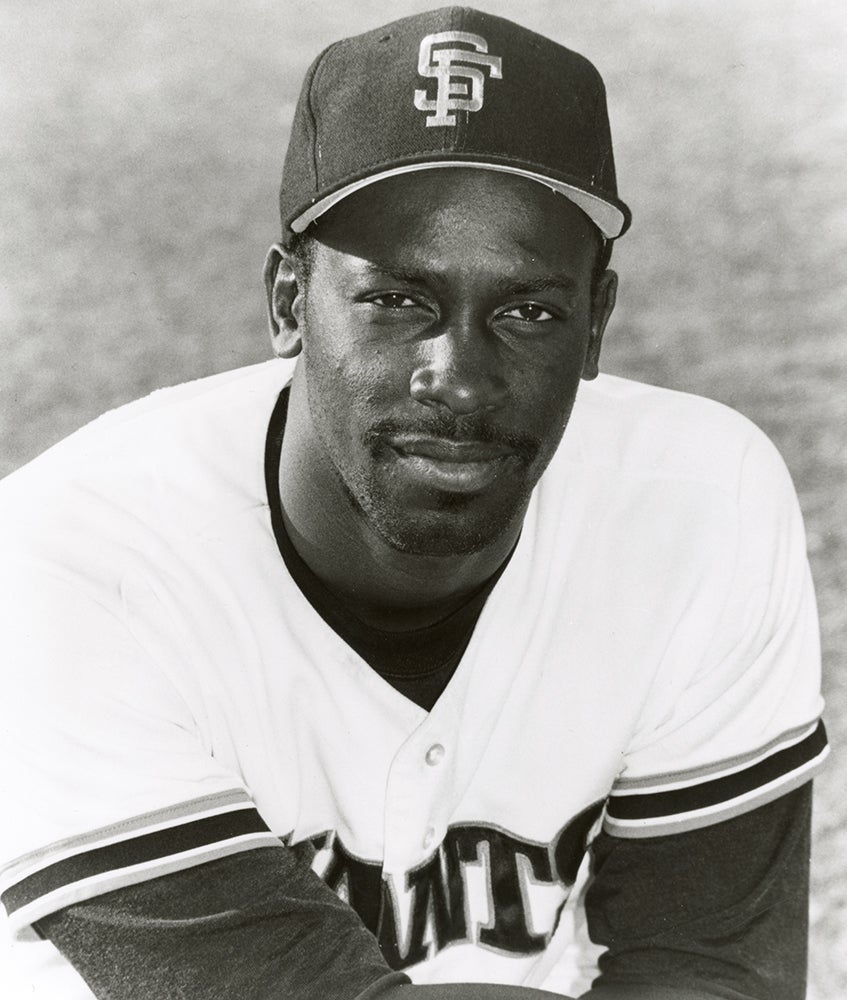
Davis bounced back strongly in 1984 by hitting .315 with 21 homers and 81 RBI while earning his first All-Star Game selection. The Giants transitioned Davis to right field in 1985 when he hit .270 with 13 homers and 56 RBI, and Davis followed that up with a similar season in 1986 while again earning an All-Star Game berth (.278, 13 homers, 70 RBI). Then in 1987, the Giants made a surprising run to the division title – with Davis leading the way with 24 home runs and 76 RBI. The Giants were 39-40 and in third place in the NL West heading into games on July 5 when general manager Al Rosen swung a deal that brought Dave Dravecky, Craig Lefferts and Kevin Mitchell from San Diego to San Francisco.
From that point, the Giants went 51-32, with Davis posting a .374 on-base percentage with 12 homers and 37 RBI.
“To be honest,” Davis told the Oakland Tribune, “Al Rosen is our MVP.”
Playing in the postseason for the first time, Davis was 3-for-20 (.150) in San Francisco’s seven-game NLCS loss to the Cardinals. And suddenly, Davis was a free agent for the first time.
On Dec. 1 – the same day the Giants signed free agent outfielder Brett Butler – Davis signed a one-year deal worth $850,000 with the California Angels, fulfilling his wish to get away from the cold and windy conditions in San Francisco.
“I’m just so glad to be an Angel and be coming back home to Southern California,” Davis told the Associated Press. “I really look forward to having some fun with this club and contributing to winning in any way.
“Playing in Southern California was something I wanted. The Giants realized I wouldn’t be content to play in Candlestick Park any longer.”
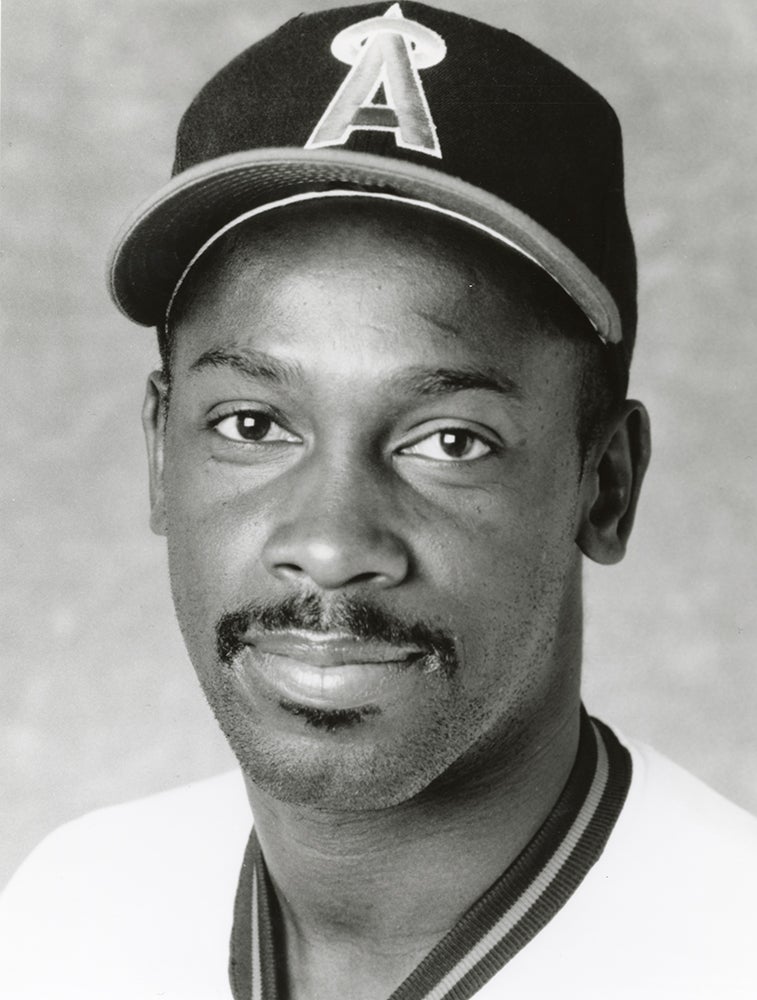
Davis had an outstanding season at the plate in 1988, hitting .268 with 21 homers and 93 RBI. But he committed an Angels’ team record 19 errors in right field, a figure which hastened his move to left field a year later.
By 1990, Davis transitioned to a DH role and played only nine games in the field – not counting one appearance as a pitcher – in his final seasons in the big leagues.
But the Angels were more than happy with Davis’ overall performance, and on Feb. 1, 1989, Davis and the team agreed to a three-year contract extension worth $4.1 million.
“He wasn’t afraid,” Angels general manager Mike Port told the Los Angeles Times about Davis’ decision to initially take a one-year deal, “to go out and earn a multiyear contract.”
Davis hit .271 with 22 home runs and 90 RBI in 1989, finishing 25th in the AL Most Valuable Player voting in the first season where he earned MVP votes. But in 1990, Davis missed extended time in July and August with a strained lower back, appearing in just 113 games for the season while hitting 12 home runs.
Following the season, Davis was one of 15 players who became “new look” free agents following a collusion settlement between MLB and the Players Union. Davis believed the Angels cooled his market by painting him as an injury risk, hoping he would then return to the team. Instead, Davis signed a one-year deal with the Twins worth a reported $1.7 million with the opportunity to secure another $600,000 in performance bonuses and an option year for 1992.
It would be a bargain that would help bring a World Series title to Minnesota.
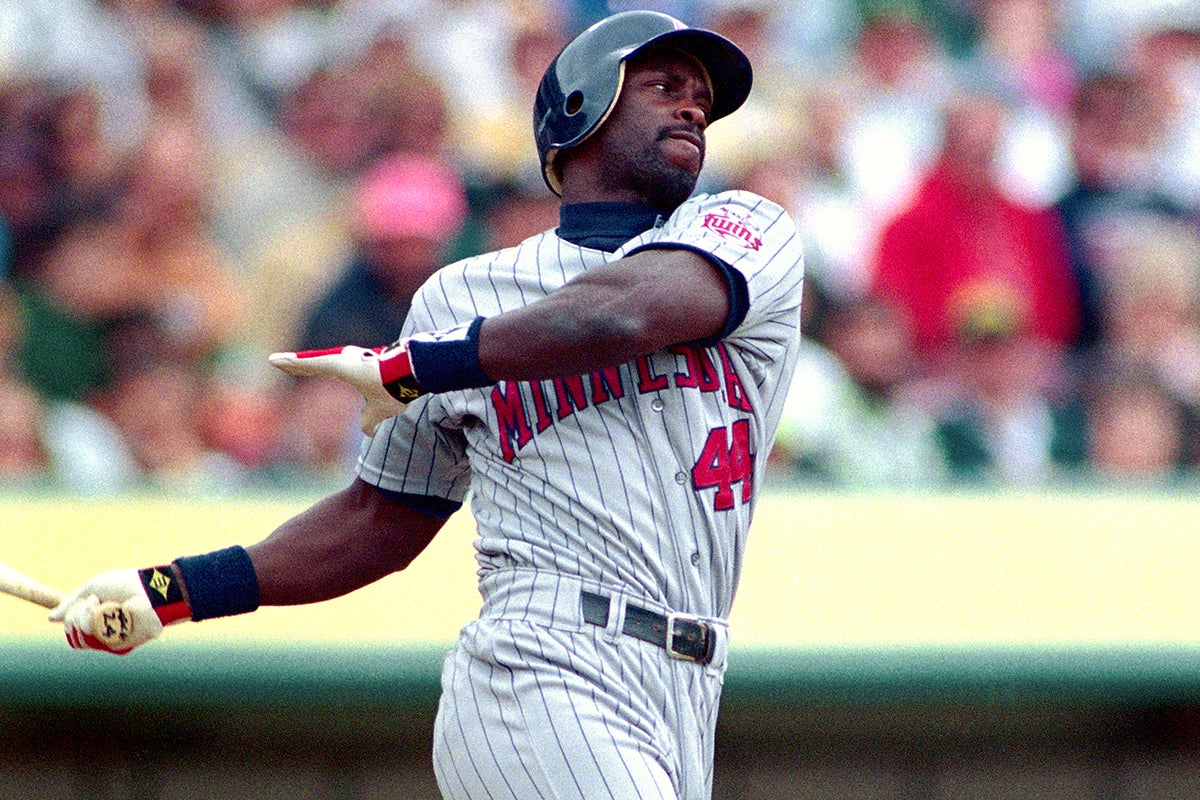
Davis hit out of the No. 4 or No. 5 hole all year for the Twins in 1991, batting .277 with team-leading totals in doubles (34), home runs (29), RBI (93) and walks (95). The Twins went from last place in the AL West in 1990 to winning the division a year later, sending Davis to the postseason for the second time.
In Game 1 of the ALCS vs. the Blue Jays, Davis’ two-run single off Tom Candiotti in the first inning gave Minnesota a lead it would not relinquish in a 5-4 victory. He hit .294 (5-for-17) with five walks in Minnesota’s five-game series win, then batted .222 with two home runs in the World Series against the Braves – including a two-run home run off Tom Glavine in the first inning of Game 2 in a contest the Twins won 3-2.
Davis did not start Game 3 as the series moved to Atlanta, where DHs were not used in NL parks during that era. But he delivered a two-run, pinch-hit home run off Alejandro Peña in the eighth inning to tie the game at four in a contest the Braves won in 12 innings. Davis did not play in Game 4 but started Game 5 in right field, totaling a hit and two runs scored in Minnesota’s 14-5 loss.
The Twins won the World Series in seven games to give Davis his first championship ring. Following the season, Davis was named the Designated Hitter of the Year, which was renamed in 2004 as the Edgar Martinez Award.
“We wouldn’t be where we are if it wasn’t for Chili, that’s for sure,” Twins general manager Andy MacPhail told the Los Angeles Times during the 1991 season. “We’re the beneficiary of him being 100 percent physically and on a mission to demonstrate he can still play.”
Unsurprisingly, the Twins exercised their option and brought back Davis in 1992. And while he batted .288, he hit just 12 home runs to go with 66 RBI in 138 games.
“I don’t care about my average,” Davis told the Minneapolis Star Tribune toward the end of the 1992 season. “But I care about run production, and there wasn’t much of that. (The fans) expected more, but they weren’t the only people who did.”
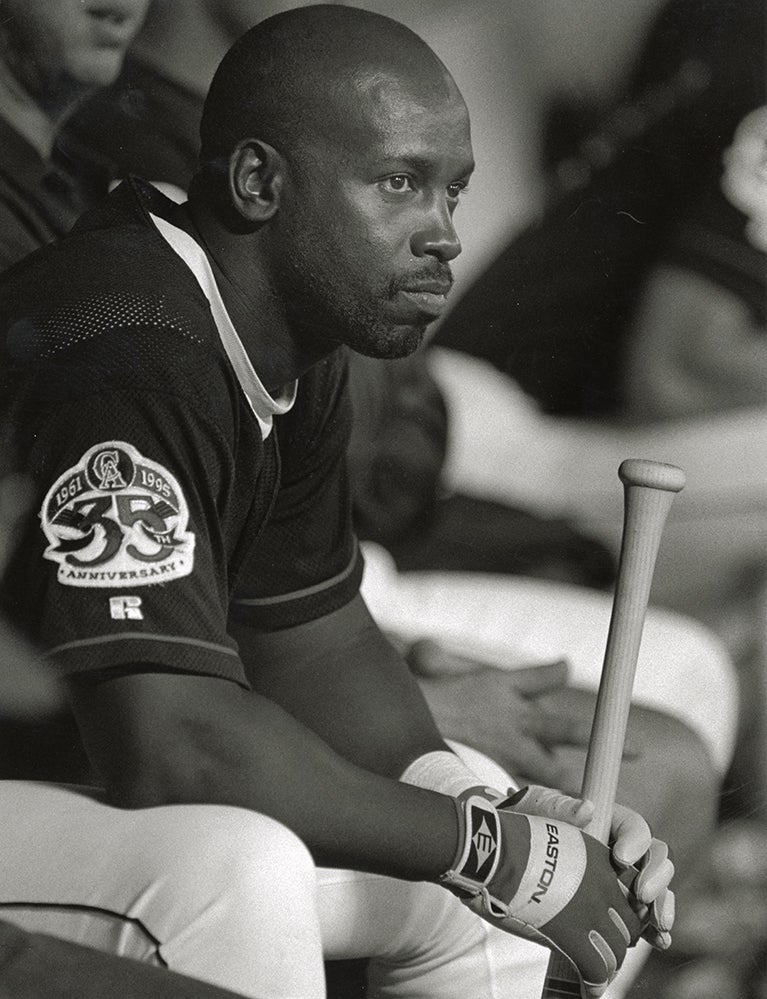
A free agent once again, Davis returned home to Southern California, rejoining the Angels on a one-year deal worth $1.75 million with $650,000 in incentive clauses and an option year for 1994. Davis ended up staying with the Angels for four seasons, remaining one of the game’s most consistent and productive designated hitters.
Davis hit .311 with 26 homers and 84 RBI in 108 games in the strike-shortened 1994 campaign, posting a .971 OPS that was seventh in the AL, earning his third All-Star Game selection and finishing 22nd in the AL MVP voting. He hit .318 with 20 homers, 86 RBI and a .429 on-base percentage in 119 games in 1995 after agreeing to a three-year, $11.4 million contract extension early in the season.
Davis continued to be productive during his age-36 season in 1996, hitting .292 with 28 homers and 95 RBI. Then on Oct. 28, 1996, the Angels sent Davis to the Royals in exchange for pitchers Mike Bovee and Mark Gubicza.
“When it’s on the line, he’s going to give you a quality at-bat,” Royals manager Bob Boone told the Kansas City Star during Spring Training in 1997. “Chili is one of the best at that.”
Davis gave the Royals what they were looking for, hitting 30 home runs with 90 RBI while drawing 85 walks – his third straight season with at least 85 bases on balls. When Davis hit his 300th career home run on April 29, 1997, off the Blue Jays’ Paul Quantrill, he became just the fourth switch-hitter in history with 300 homers – joining a list that at the time included just Mickey Mantle, Eddie Murray and Reggie Smith.
“My all-time favorite hitter is Eddie Murray,” Davis said of his fellow Los Angeles high school graduate.
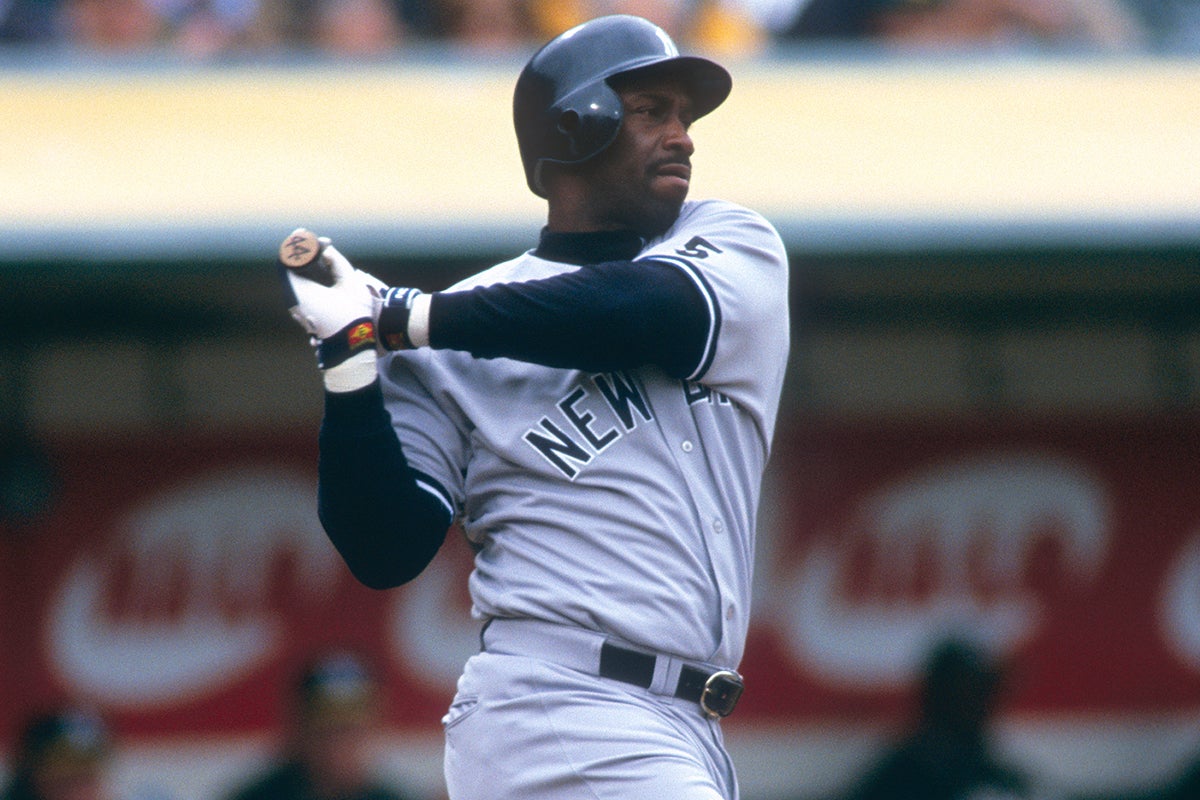
Davis was a free agent again after the season, and the Yankees, who used 14 players as designated hitters in 1997, quickly zeroed in on him as a target and signed him to a two-year deal worth a reported $9.8 million on Dec. 10.
“I highly recommended the Yankees to Charles,” Davis’ agent Tom Reich told Newsday. “Good fit, and it should be a good experience for him.”
But Davis appeared in just two games in April before an ankle injury sidelined him until August. Then a rib cage injury limited him to batting from only the right side of the plate. He finished the season hitting .291 in 35 games as the Yankees rolled to 114 victories. But he played regularly in the postseason, helping New York win the World Series while batting a combined .259 with seven RBI in the ALDS, ALCS and Fall Classic.
He drove in three runs in New York’s 5-3 win over Cleveland in Game 5 of the ALCS, and his pinch-hit grounder (which was scored as an error) plated Shane Spencer in the seventh inning of Game 3 of the World Series to bring the Yankees to within 3-2 of the Padres in a game New York won 5-4 to take a commanding 3-games-to-none lead in a series the Yankees eventually swept.
Davis played in 146 games in 1999, batting .269 with 19 homers and 78 RBI as the Yankees again won the World Series. The Yankees released Davis on Dec. 1, and with three World Series rings in his pocket, Davis decided to retire.

“Chili exemplifies character and class,” Yankees general manager Brian Cashman said in a statement. “He was a veteran leader who, along with his offensive skills, brought professionalism and competitiveness to the ballpark every day.
“When we acquired Chili prior to the 1998 season, we felt he was one of the necessary ingredients in constructing a world championship team. He helped us win two.”
At the time of his retirement, only Mantle (536) and Murray (504) had more home runs than Davis (350) among switch-hitters.
Davis soon returned to the game as an instructor, serving as the Athletics hitting coach from 2012-14, Boston’s hitting coach from 2015-17 and the Mets’ hitting coach from 2019-21.
In addition to his 350 home runs, Davis totaled 2,380 hits, 424 doubles, 1,372 RBI and 142 stolen bases over 19 big league seasons. And while he was not the first Jamaican to play in the big leagues – Oscar Levis, born Aug. 7, 1898, in Oracabessa, Jamaica, pitched for the Cuban Stars East from 1923-29 and holds that distinction – Davis ranks among the most successful Caribbean-born players in history.
“The days of me trying to prove anything to anyone are over,” Davis told the Kansas City Star in 1997. “The team thing is important to me now. It’s ‘Did we win or did we lose.’
“When you win more than you lose, it’s something because there are a lot of games.”
Craig Muder is the director of communications for the National Baseball Hall of Fame and Museum

